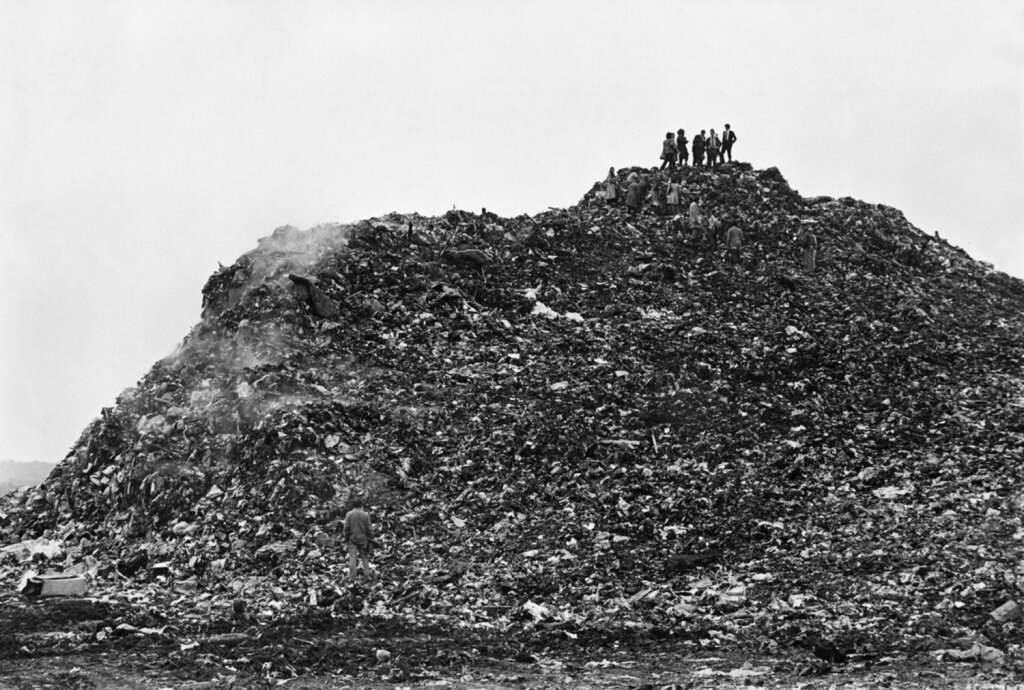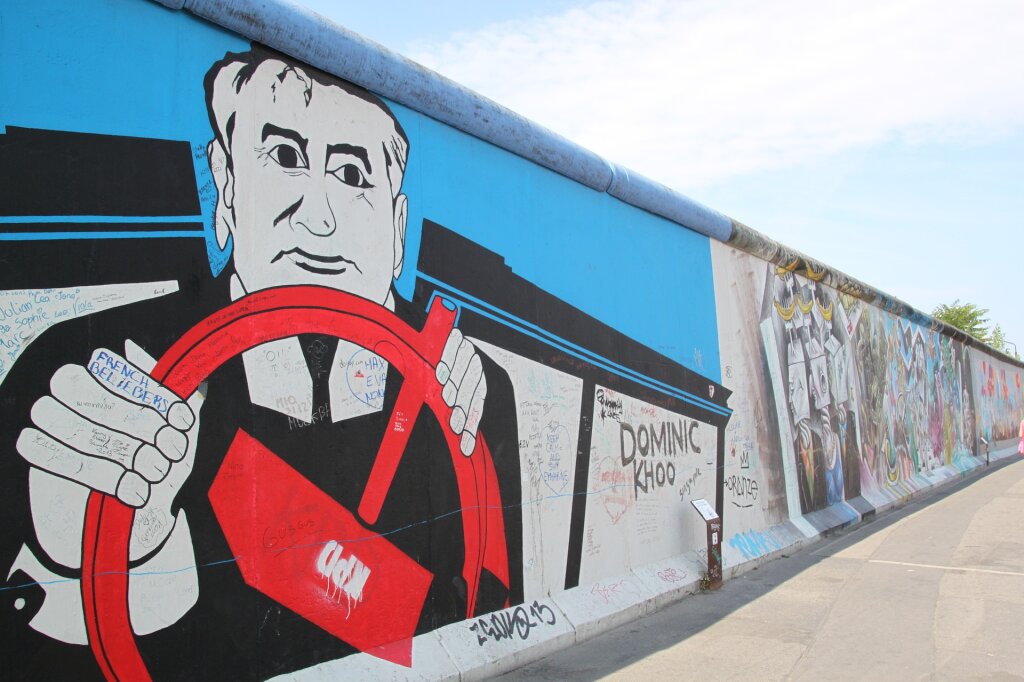This past June — a moment since blotted out by geopolitical horrors large and small — Vladimir Putin sat down with NBC’s Megyn Kelly for an interview subsequently lambasted as boring, “stubbornly uninformative theater.” It’s true that neither party said anything unexpected, instead treating viewers to another episode of “Dogged Journalist Confronts Icy, Obfuscating Politician.” Yet the conversation’s very lack of narrative drive offers insight into the heart of Putin’s messaging strategy — and into the fundamentally cumulative nature of contemporary political ideology.
Cumulative ideology emerges when the mask of neoliberalism begins to slip; when the façade of what leftist critic Mark Fisher termed “capitalist realism” cracks and warps. As Fisher argued in his eponymous 2009 book, subtitled Is there no alternative?, neoliberalism created a self-justifying “business ontology,” the success of which relies precisely on the absence of propaganda. “The role of capitalist ideology,” he wrote,
is not to make an explicit case for something in the way that propaganda does, but to conceal the fact that the operations of capital do not depend on any sort of subjectively assumed belief. It is impossible to conceive of fascism or Stalinism without propaganda — but capitalism can proceed perfectly well, in some ways better, without anyone making a case for it.
In order to function, ideology must maintain a metaphorical distance between present and future. Before Germany could become a proud Thousand-Year Reich, the Nazis said, it had to rid itself of the verminous Jews and Slavs occupying Germans’ Lebensraum in Europe’s East. To attain US-style prosperity within a decade, argued Stalin, the USSR must immediately collectivize its agricultural sector. The distance between how things are and how they ought to be is the space where ideology resides. Without that space, there can only be the infinite citations, the fragmentation and discrediting of metanarratives characteristic of postmodernism.
The great achievement of Western neoliberals since Thatcher and Reagan has been to radically conflate the present with the future, squeezing ideology out altogether. Until recently, the neoliberal order’s ideological emptiness seemed to insulate it from change or even serious critique, which, if anyone happened to articulate it, would immediately be screen-printed on a unisex cotton T-shirt and sold for $25.99 a pop.
But starting in the mid-1990s, and culminating in the election of Donald Trump in 2016, ideology has begun to creep back into the space between present and future, pushing them further apart. Today’s political landscape is dominated by figures who have discarded postmodernism’s skepticism toward grand narratives. But rather than returning to the days of proclamations and manifestoes — in other words, to modernism — they have allowed their ideologies to take shape cumulatively while saying as little as possible in public. Actions have begun to speak not simply louder, but instead of words. Citizens can no longer inductively predict the behavior of their politicians based on their stated policy platforms, which can only be deduced after political decisions have already been made and their ramifications are in the process of unfolding.
Cumulative ideology was on full display in Putin’s NBC interview. At first glance, his responses appear to be little more than content-free deflections. Indeed, Putin parried each of Kelly’s attacks by bringing up some pointedly America-centric issue, from the unfairness of the Electoral College to police brutality in the Occupy Wall Street protests. He also shared several cybertruisms, disclosing that “IP addresses can be camouflaged such that no one will ever know their origin.” “Conversely,” he added, “any person or group can be set up to look like the origin of a given attack.” To think otherwise, Putin concluded, is to fall into “illusion.” When Kelly asked him to clarify his earlier remarks on “patriotic hackers,” Putin replied with a helpful historical analogy:
Let’s recall the assassination of President Kennedy. You know, there’s a theory that it was organized by American intelligence services. If this version holds — and we can’t rule it out — then what could be easier in today’s world than to organize the appropriate kind of attack, using all the technical capabilities that intelligence services now have, and then point fingers at Russia?
By invoking an American conspiracy theory dating to the late 1960s, Putin steered Kelly away from the hard-hitting, topical analysis NBC viewers crave and into the realm of dusty, undecidable arcana. In the unlikely event that hacking did occur in 2016, he suggested, it was the product of America’s roiling internal divisions, not foreign meddling. After all, no one can really know what happened on that grassy knoll, and plus, wasn’t the Kennedy assassination, like, a million years ago? Besides, Putin continued,
[American] presidents come and go. Even the ruling party can change, but the core political trajectory never does. So, in the grand scheme of things, it’s all the same to us who will lead the United States. We know what’s going to happen, more or less. That’s why it wouldn’t make any sense for us to interfere, even if we wanted to.
In sum: the hacks probably didn’t happen, and if they did, they probably didn’t come from Russia, because who would want to hack the boring old American election, anyway. Nothing to see here, folks!
Putin’s studied nonchalance belied a significant shift in messaging around Russia’s involvement in the hacks. As the Washington Post pointed out when Putin made his initial statement about “patriotic hackers,” he could no longer avoid acknowledging the hacks’ distinctly Russian flavor. At best, he could reduce his admission’s impact, for example by disavowing the hacks’ significance, devolving responsibility onto standalone “patriots” unaffiliated with the Russian government, or obliquely gesturing toward a CIA-sponsored conspiracy.
Putin has perfected this type of rhetorical repositioning, which enables him to deny the seemingly undeniable until after it becomes a fait accompli. Even then, his revelations proceed so incrementally that their cumulative impact is palpable only in retrospect. When Russian troops invaded Ukrainian territory in the run-up to the annexation of Crimea in 2014, they wore unmarked uniforms and masks. Though they spoke perfect standard Russian and appeared aligned with Russian military interests in the region, Putin spent months denying that these “little green men” were Russian soldiers. Three years later, the true purpose of Putin’s actions in Ukraine remains nebulous: is he pioneering a new type of warfare? Is he fomenting chaos to neutralize a potential NATO ally, or is his Ukrainian intervention part of a concerted program of what Joseph Stalin would have called “great-Russian chauvinism”? Waging an open-ended war has historically required ideological justification on the part of the aggressor’s leaders, even if its underlying Realpolitik is self-evident. Yet even as it generates ideologically-motivated online flamewars of startling magnitude — many of them apparently Kremlin-sponsored — the Ukrainian conflict remains stubbornly lacking in officially promulgated rationales.
Every policy Putin has pursued since taking power in 2000 — the suppression of political dissenters, up to and including allegedly ordering the assassination of journalists; the creation of a puppet regime in Chechnya; and the strategic alteration of the Russian constitution — has exhibited this same combination of cumulatively repressive substance cloaked in deliberate ideological neutrality. Following the 2006 murder of Anna Politkovskaya, a journalist known for her intrepid reporting on both Chechen wars, Putin took pains to emphasize that she had been a “radical” presence with no “serious influence on the political mood.” Her murder, he claimed, was therefore an exclusively criminal matter, its political significance limited to the embarrassment it was causing Putin abroad. Politkovskaya’s death, Putin stated, “[did] much greater damage” to the government she had criticized “than her publications ever did.” This is cumulative ideology at its finest: Politkovskaya was a fly in Putin’s ointment, and it is entirely plausible that he might have wanted her dead. But rather than denouncing her as a member of the Lügenpresse, as certain historical dictators were wont to do, Putin cast her as an irrelevant extremist, thus leaving observers to infer her death’s true significance.
Since 2006, the gap between reality and rhetoric has only widened. Putin frequently casts opposition to his regime as either nonexistent or unlawful while systematically rendering protest personally dangerous and legally fraught. When Megyn Kelly tried to take him to task for the Kremlin’s treatment of dissidents, he maintained that all Russians “have a right to express their views” within the limits prescribed by law. Such a framing conveniently elides the sweeping legal changes the Putin regime instituted following the mass protests of 2011-13, which have criminalized many previously sanctioned forms of dissent.
Putin’s ideologically vague façade is by no means unique among world leaders, some of whom have been practicing similar tactics for decades. In the 1990s, Bill Clinton perfected campaigning as lifestyle marketing, a process that culminated with the strategic deployment of “triangulation” during the 1996 election cycle. At the time, a breathless Time Magazine profile of Dick Morris, Bill Clinton’s campaign manager, called Morris’ invention of the technique his “outstanding achievement.” Time described triangulation as “standing between and even above the two parties by embracing issues that lie ‘outside the box’ of traditional two-party politics.” This assessment was already dubiously high-minded in 1996, when triangulation, far from giving Bill Clinton an opportunity to think outside partisan “boxes,” instead enabled him scoop up liberal-leaning voters right after passing the conservative policy of welfare “reform.” Since then, the practice has metastasized in the mainstream American left, locking Democrats into a flaccid centrism that arguably lost them the last election. As Hillary Clinton’s campaign demonstrated, the especially cumulative form of triangulation that evolved after the 1990s, in which direct messaging is de-emphasized to the point of nonexistence, no longer guarantees a candidate’s success.
Triangulation has contributed to the passivity and cynicism of large sections of the American electorate by exacerbating the mismatch between rhetoric and policy. We may surmise from the 1996 Time article that triangulation, at least initially, was perceived as a pragmatic tool, a way to forge difficult compromises in an increasingly polarized political landscape. But triangulation has proven to be far more than the practice of saying nothing while catering to a variety of interest groups. It has become an enabler of right-leaning economic policies masquerading behind the egalitarian language of identity politics (“We’re just fighting for the interests of White Americans!”) Neoliberalism feeds on triangulation in the same way that Putin’s played-down authoritarianism — fully on display in his actions — slumbers within his bland rhetoric.
The same phenomena are on display on the political right, even where it eschews blandness. Though he may appear to be a neo-fascist demagogue (or a daring teller of hard truths, to his admirers), Trump belongs to the same hollowed-out ideological formation that brought us Putin and both Clintons. His political positions do not spring from a coherent agenda formulated ahead of his rise to power. Indeed, even his most fervent-seeming obsessions, like the commitment to using the term “radical Islamic terrorism,” turn out to be context-dependent. Rather than flowing inductively from programmatic statements or writings, Trump’s agenda can only be deduced from an accumulation of statements and omissions; action and inaction; leaked rumor and early-morning Tweet. A “king of flip-flops,” as The Washington Post dubbed him, he switches strategies on a dime, defying observers’ attempts to slot him into any single category. True, he may be a charismatic xenophobe like Hitler or Mussolini, but he is no economic populist and therefore not a “real” fascist. Yes, he’s played fast and loose with “alternative facts,” just as one would expect from a postmodern politician. But what to make of his violation of the bedrock postmodernist principle of incredulity toward metanarratives through his embrace of “Make America Great Again,” a grand narrative par excellence?
Regardless of his actual allegiances, Trump’s cumulative ideology — his fascism without fascism, as it were — is having a clear effect. At a high-school basketball game in Florida this past summer, white students chanted “Trump! Trump! Trump!” at black students from an opposing high school, illustrating how the man’s very name has become “single-syllable shorthand for xenophobia and white supremacy.” Trump’s outlandish persona commands so much news covfefe that the public can barely stay awake for his possible violations of the Emoluments Clause, the doubling of ICE arrests of non-criminals since last November, or the Senate’s secretive work on the GOP tax bill. These acts, many of them downright dictatorial, are perpetrated without the accompaniment of anti-Semitic jeremiads or a Little Red Book.
Given the impact of Trump’s actions and utterances, making sense of his rhetorical vapidity may seem unimportant. But as in the cases of Putin and the Clintons, hyperactivity in the former arena is inextricably connected to flatlining in the latter. The kinship among the strategies of these political figures is not in intent or even mechanics — for one thing, Trump does not triangulate — but in their soft approach to ideological messaging. For Hillary, this approach consisted of saying nothing in public without prior approval from focus groups. For Putin, it means speaking in platitudes spiced with the occasional lewd joke, Great Patriotic War reference, or invocation of “spiritual staples.” And for Trump, it means avoiding content altogether, leaving his listeners (not to mention the victims of his policies) to parse his contradictory statements and behaviors for a sense of direction.
These politicians are symptomatic of a curious new phase, further than ever from the “end of history” Francis Fukuyama proclaimed in 1989. Postmodernism is waning. Metanarratives are back with a vengeance, often in the form of conspiracy theories nourished in the filter bubbles of social media and alt-right paranoia engines like InfoWars or Breitbart. The rise of cumulative ideology may be a side effect of this post-postmodern resurgence of narrative, a way to fill the what philosopher Claude Lefort termed the “empty place” at the heart of “contemporary liberal democracy.” Cumulative ideologies stand to do as much harm as their inductive counterparts. Putin’s aggression in Ukraine may be “non-linear,” but it is by no means intangible. The Trump administration’s racism, misogyny, and corruption are hidden only in discourse. We are living not in the age of Trump or Putin, but in the era of “all means and no ends,” all hedge and no bet, of ideological sleepwalking.



